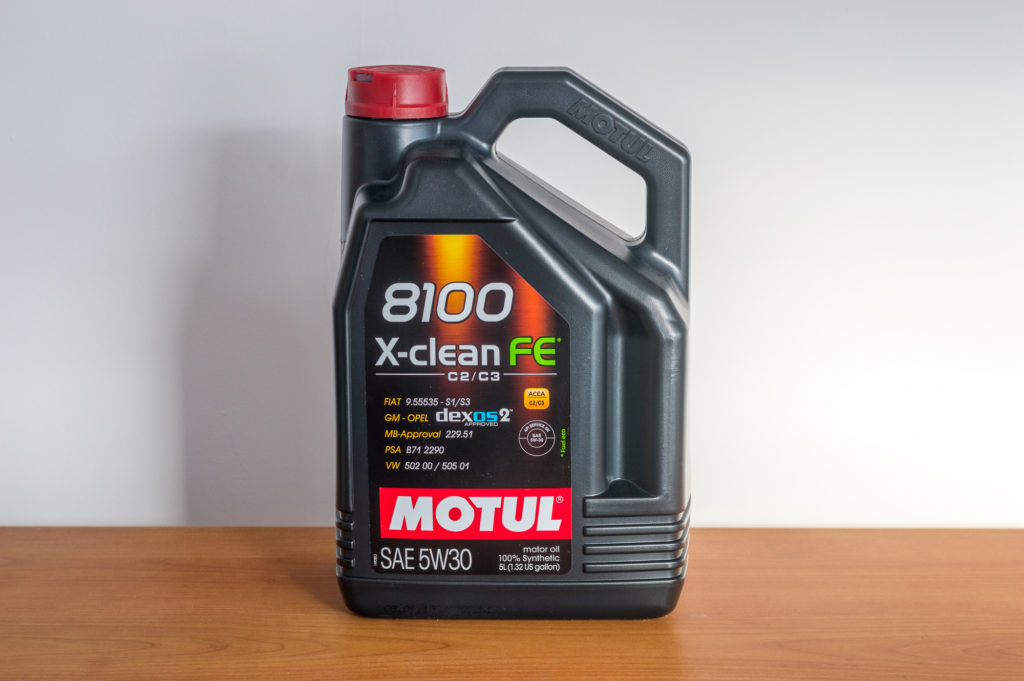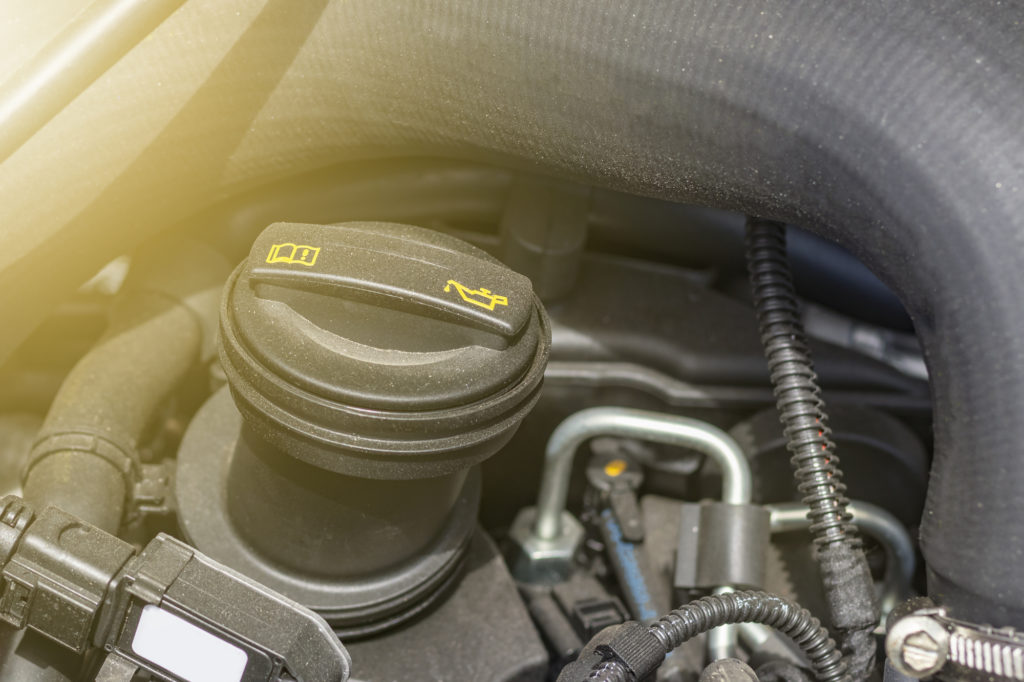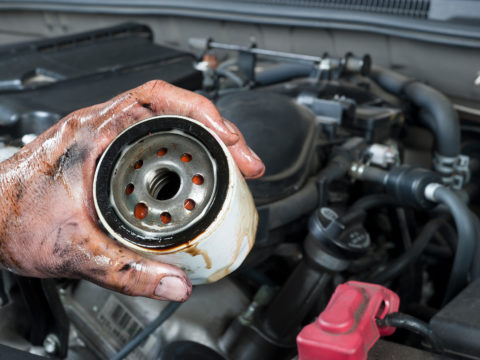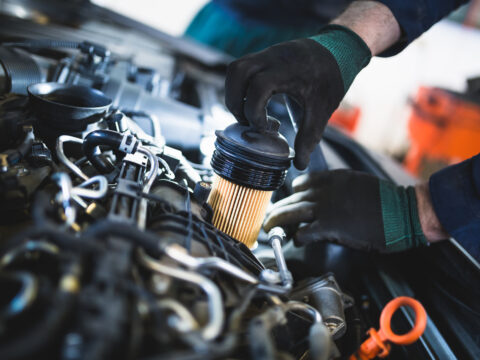Every car owner needs to add oil to the engine and regularly change the oil. Did you ever look at the bottle and see “SAE?”
Every bottle of oil has SAE on the label. Let’s take a look and see why SAE is there and what the letters say about your oil.

Contents
What Is SAE Oil?
SAE stands for Society of Automotive Engineers. SAE formed organically out of early twentieth-century ideas that the budding automobile industry lacked patent protection, standards, and quality control.
Peter Heldt and Horace Swetland, whose tireless efforts helped form the SAE in 1905, wrote about automobiles for a living. Andrew Riker served as president, and a talented, young engineer named Henry Ford served as vice president.
When it comes to automotive oil, SAE sets the standards that ensure a brand of oil is of the same quality and has the same effectiveness in every market worldwide.
The SAE standard also decides which viscosity category an oil falls into, such as the ubiquitous 5W-30 grade.
What Do the Numbers and Letters Stand For?
The numbers and letters are codes and work together somewhat like a math equation. SAE is always there because every oil falls under its umbrella of standardization. The formula grades go SAE XW-XX, where X is variable, and W is constant, SAE 5W-30, for example.
The Initial Letters
SAE never changes and is the abbreviation of Society of Automotive Engineers.
The Middle Letter ‘W’
The letter W means winter, and people often mistakenly assume that W stands for weight. The winter rating is not critical for most people in the world, except those who live in cold climates, or places that can experience harsh winters.
The winter rating gives information about the temperature at which the oil starts to flow, for example, 0° Fahrenheit, or -17.8° Celsius. The letter W on oil bottles exists because of viscosity.
Higher viscosity means thicker oil. Thick oil means slower flow, which can damage an engine.
The First Number
The first number in an oil such as 10W-40, where 10 is the first number, means 10°F and links to the “W” rating. Oil with 10W on it means the viscosity rating is 10°F, well below freezing. In climates that drop to five or zero degrees, 10W will not work.
A simple way to describe 10W is to think: below 10°F the oil will not flow.
The Last Number
Where the first part, XW, refers to cold conditions, the last part, XX, refers to a standardized assumption of the engine running at 212°F or 100°C.
Determining the last number is slightly complicated. The process involves a measuring instrument named a viscometer. A viscometer measures centistokes, written as cSt.
The full explanation of what is going on takes a long time, but the result is relatively simple. Viscosity, the way oil flows, determines how well an engine works without causing damage. In 10W-40 oil, 40 means the reading from the viscometer scores a 40 at 212°F.
Water has a viscometer reading of approximately 1 cSt, too low for engine oil. The 40 means at 212°F, the viscometer reads between 12 cSt to 16 cSt, within a good range. 20 is less viscous (thinner) than 40 at 212°F. 30 is more viscous (thicker) than 20 at high temperatures, so forth, and so on.
The winter side and the hot side of the grading system do not move together on a sliding scale. Various additives in different types of oils allow manufacturers to create new blends that offer different levels of performance under varying conditions.
What SAE Oil Grades Are Available?
Choosing an oil used to be simple as only a few grades existed. Not anymore, there are more blends from more brands for any layman to track. A visit to the website of a big-box retailer will have pages and pages of engine oil.
A closer examination reveals a lot of fancy names, but the grading system has not changed. Grades such as SAE 0W-30, SAE 5W-30, SAE 10W-30, and SAE 0W-40 have been around a long time.
SAE 0W-30
0W means that this oil has low viscosity and makes a good choice for cold climates during winter. An SAE viscosity rating of 30 means this oil has a cSt between 9 and 12.
Together, the 0W-30 rating means an engine using this oil should perform well in a harsh and cold climate and hold up well if the engine gets hot. ‘Hold up well’ means the viscosity stays low, but the oil does not get too thin as the engine heats up.
SAE 5W-30
SAE 5W-30 engine oil means that this oil performs almost identically to 0W above, still having low viscosity at low temperatures and a slightly higher viscosity as the engine heats up to better lubricate the moving parts.
The difference between 0W and 5W (0°F and 5°F) is minor, and in cold climates, a person can expect almost the same performance. Choose 0W if you live in an extremely cold place.
SAE 10W-30
SAE 10W-30 oil still offers good protection against temperatures well below the freezing point of 32°F. 10W stands for 10°F or -12°C.
The hot engine viscosity point of 30 means this oil performs relatively well as the engine heats up. However, the performance bias still leans towards colder climates.
SAE 0W-40
SAE 0W-40 oil can handle almost any climate. The 0W gives protection at 0°F without the oil seizing up due to high viscosity.
Likewise, the hot engine viscosity rating of 40 holds up well through a range of hotter temperatures and does not let the viscosity get too low.
For a person who travels by automobile often and goes through a range of climates across the country, SAE 0W-40 oil is a great choice.
How Does SAE Oil Differ from Ordinary Oil?
SAE oil differs from ordinary oil in many ways. SAE applies standards so that all SAE oil provides the same quality everywhere and at all times. Plain oil does not meet SAE standards.
Synthetic Oil
Over the past few decades, synthetic oil and synthetic blends that offer better performance have taken over the automobile industry. All of these oils still meet SAE standards.
Non-Synthetic Oil Faded Away
SAE-approved non-synthetic oil still exists on the market but is not easy to find. Furthermore, the performance is not as good, and plain oil has to be changed more often.
Shipping and Shelf Stable
SAE oil can ship anywhere and offer the same quality in Asia or North America.
Tailored to All Climates
In harsh climates, hot or cold, the weather does not forgive mistakes that may seem minor, such as which oil goes in the engine. Using the designated grade of SAE oil in an extreme climate provides peace of mind that the product will work as promised.
SAE Oil Protects Automobile Engines
If an automobile is under warranty, and the engine breaks down, the use of non-SAE oil violates the terms of most warranties. A company can deny coverage if the damage appears to be the owner’s fault.

Pros and Cons of Using SAE Oil
There are many pros and not many cons. Automobile owners have everything to gain by using SAE oil.
Pros
- Quality that always meets a certain standard.
- Purchase with confidence
- Many product lines meet SAE standards for all types of vehicles in all climates.
Cons
No con would cause a person to choose ordinary oil instead of SAE oil because the quality of plain oil could be high, low, or anywhere in between. By that logic, the price difference is not a con because you get what you pay for, and ordinary oil is cheap and low quality.
Best SAE Oil Brands Available
Mobil
Founded in 1911 as the “Standard Oil Company of New York,” the pedigree of Mobil means it appears in most markets all over the world from $7.88 to $49.99.
Valvoline
Valvoline offers one of the best high-mileage 5w30 oils from $5.99 to $24.97.
Castrol
Castrol is a great, budget-friendly oil that extends engine life from $4.68 to $24.04.
ACDelco
An American brand not suitable for all budgets, ACDelco is the Original Equipment Manufacturer (OEM) brand for Buick, Chevy, Cadillac, and GMC from $12.80 to $33.99.
Motorcraft
Ford Motor Company manufactures this oil with Ford engines in mind. However, Motorcraft oil offers the same quality to all automobiles at budget-friendly prices ranging from $4.10 to $20.52.
Is SAE Oil Worth It?
Yes, SAE oil provides as much reliability as possible. The alternative is buying crude oil in bulk and having no idea how much protection it provides.
SAE oil assures a top-notch product every time with low and high-temperature grades worked into the label to provide consumer confidence.
The grades of oil assure the application of proper standards for different automobiles in various climates on every continent.
Automobile engines cost a lot of money, and most people cannot afford to risk the damages with a low-quality product over a price difference of a few dollars for SAE engine oil.














